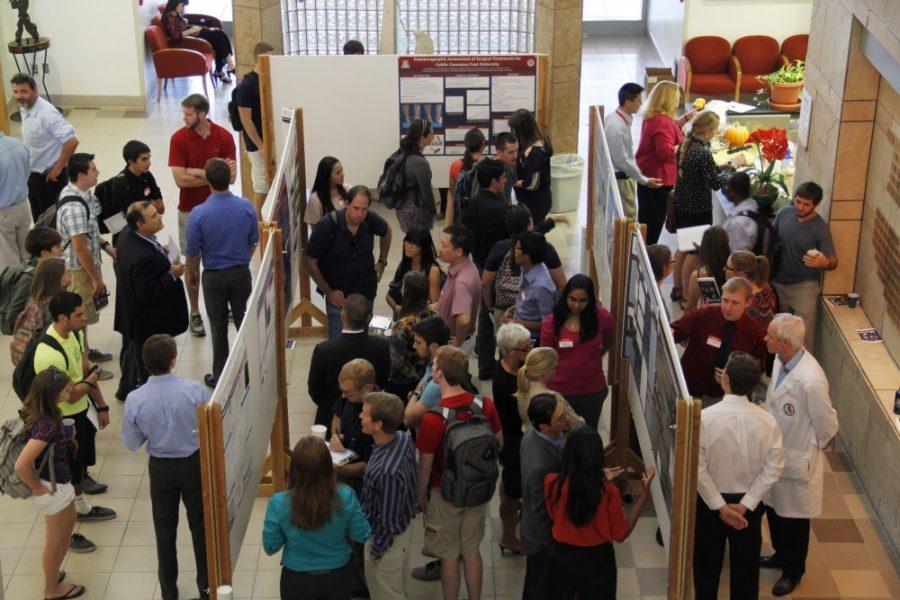The UA’s first Biomedical Engineering Design Day showcased a variety of research projects within the field at the UA Cancer Center yesterday afternoon.
More than 20 student-designed posters covering a wide range of biomedical engineering topics were placed on exhibit to compete for a cash prize. While the judges made their decisions, attendees mingled and discussed their research.
The biomedical engineering undergraduate program is only four years old and enrollment has been growing significantly since its creation, said Diana Wilson, the program’s adviser.
“I hope younger students will be inspired and notice that research can really have strong outcomes,” Wilson said. “Lives can be improved through medical research.”
The poster judging was conducted from 1 p.m. until 2 p.m., followed by a keynote presentation from Patrick Norris, a product development engineer with W.L. Gore and Associates, a Delaware corporation that manufactures a variety of products for a number of different industries.
First place was awarded to biomedical engineering junior Sumana Veeravelli for her presentation on magnetic resonance imaging of the neurological effects of hypertension.
“I think this is a great opportunity for many reasons,” Veeravelli said. “It gives students who are doing research a chance to present and use their communication skills and translate the science research we are doing to the community.”
Second place was awarded to Michelle Heusser and third place to Logan Graves.
“Learning how to communicate as a science major is important and a nice opportunity for the students to get to talk to professionals in the industry and see what life will be like after graduation,” Veeravelli said.
Senior Ariana Lamanda focused her poster presentation on electrokinetic isolation of free circulating DNA from physiological samples.
“I think it is important because this way we actually get to present our research and get it out there,” Lamanda said. “It gives a little bit of perspective as to what we do.”
Some attendees participated in the event to find out if biomedical engineering could be a suitable major.
“I came here because I’m not sure what I want my major to be,” undeclared freshman Emily Masterson said. “This is a great opportunity … It shows students a final project and what students can aspire to be.”
The graduating senior class this year will have completed training in translational engineering, have a solid understanding of measuring signals on living systems and experienced the workflow in a clinical environment.
“I hope that people take away that this is important research that we do and that even though it is a new field, we are definitely broadening and becoming more and more important to what society needs,” Lamanda said. “I hope they feel that we have the potential to change the future.”








